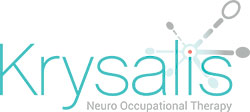Humanising the approach to brain injury care.

Yes, Tea and Sympathy, but with a Big Slice of Empathy: We look at the humanising approach to brain injury care that is proving palatable all round.
Short of telepathy, empathy must be the closest we’ll ever get to feeling what it’s like to be another human being. So why isn’t this ability to understand others being flagged as a key skill when it comes to helping ABI survivors and their families?
In recent studies [1], one of the biggest cries for help from ABI families was for greater understanding of their plight from the clinical and support workers they encountered from the onset of the injury. It was clear their suffering had been made worse by fragmented and poor-quality help and an inability of others to see the world through their eyes and comprehend their ‘lived experience’.
But how can we improve what might be labelled our ‘sensitivity skills’ or ‘human awareness’; that ability to understand others that, so far, has been thought of as just something you’re born with to a greater or lesser degree? And how can we integrate empathy into everyday work practices for better effect?
Bournemouth University researcher and lecturer, Dr Caroline Ellis-Hill, who spoke at the recent 2019 Head First conference, sponsored by Krysalis, has been grappling with that for over a decade and, happily, has some good news! According to her findings, it’s entirely possible for all of us to tweak our empathy frequency to high, and like so many other ways of picking up something new, or improving something we already know how to do, we only have to watch and learn to get good at it.

And that’s what happened when Dr Ellis-Hill involved service users and providers in a ‘Humanising Care Project’ at the Stroke Unit at Royal Bournemouth Hospital. The results? A staggering 100 per cent of users reported experiencing even better patient and family experiences. (There was also a very low number of complaints during the trial period.)
‘Humanised’ care is based on the belief that relating and interacting with patients and their families is just as important as medical and scientific expertise. Dr Ellis-Hill employed a humanising approach called ‘lifeworld’ in her trial, which presents a holistic view of the patient, their family and their life using their own personal accounts or ‘narratives’. Care providers, in turn, are encouraged to share their own narratives to help develop mutual understanding and empathy.
And there have been other trials of this approach. Brighton University researchers, for example, have discovered just how effective the lifeworld look on life can be. They gave Health and Social Care undergraduate students web-based case studies showing the human experience of the impact of illnesses such as stroke, and more general experiences such as isolation. The studies featured stories and poems alongside relevant research data and policy and practice issues [2].
So how did the students react? Well, one of them was ‘shocked at how little they actually knew’ about the illness being described, while another reported feeling ‘quite upset’ that the people behind the condition could so easily become invisible. Overall, however, the students felt inspired and determined ‘to always see the person behind the condition’ in their future working practices.
![]() So telling our story to someone else really does have benefits. And, if any further evidence was needed, we only have to turn to Dr Charlie Whiffin, a researcher and lecturer at the University of Derby with a background in working clinically with ABI survivors and their families.
So telling our story to someone else really does have benefits. And, if any further evidence was needed, we only have to turn to Dr Charlie Whiffin, a researcher and lecturer at the University of Derby with a background in working clinically with ABI survivors and their families.
Dr Whiffin carried out an 18-month study exploring the narratives of nine non-injured family members from three families with an ABI survivor on an acute neurosurgical ward [3]. Significantly, she was able to identify five key areas common to them all:
- Trauma
- Recovery
- Autobiography
- Suffering
- Family
Dr Whiffin’s study concluded that the aftermath of head injury was ‘a turbulent time’ during which it was vital to listen to the stories of those affected in order to help them through the upheaval and, in doing so, help them to re-build their lives.
References
[1] M. Holloway, D. Orr and J. Clark-Wilson, "Experiences of challenges and support among family members of people with acquired brain injury: a qualitative study in the UK.," 2019.
[2] A. Pulman, K. Galvin, M. Hutchings, L. Todres, A. Quinney, C. Ellis-Hill and P. Atkins, "Empathy and Dignity through technology: using lifeworld-led multimedia to enhance learning about the head, heart and hand.," University of Brighton, 2012.
[3] C. J. Whiffin, C. Bailey, C. Ellis-Hill, N. Jarrett and P. J. Hutchinson, "Narratives of family transition during the first year post-head injury: perspectives of the non-injured members.," Journal of Advanced Nursing, 2015.
